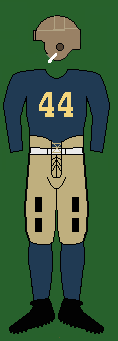| 1932 Michigan Wolverines football | |
|---|---|
 | |
| Conference | Big Ten Conference |
| Record | 8–0 (6–0 Big Ten) |
| Head coach |
|
| MVP | Bill Hewitt |
| Captain | Ivy Williamson |
| Home stadium | Michigan Stadium |
Uniform | |
 | |
| Conf | Overall | |||||||||||||||||||||||||||||||||||||||||||||||||||||||||||||||||||||||||||||||||||||||||||||||||
|---|---|---|---|---|---|---|---|---|---|---|---|---|---|---|---|---|---|---|---|---|---|---|---|---|---|---|---|---|---|---|---|---|---|---|---|---|---|---|---|---|---|---|---|---|---|---|---|---|---|---|---|---|---|---|---|---|---|---|---|---|---|---|---|---|---|---|---|---|---|---|---|---|---|---|---|---|---|---|---|---|---|---|---|---|---|---|---|---|---|---|---|---|---|---|---|---|---|---|
| Team | W | L | T | W | L | T | ||||||||||||||||||||||||||||||||||||||||||||||||||||||||||||||||||||||||||||||||||||||||||||
| No. 1 Michigan + | 6 | – | 0 | – | 0 | 8 | – | 0 | – | 0 | ||||||||||||||||||||||||||||||||||||||||||||||||||||||||||||||||||||||||||||||||||||||||
| No. 4 Purdue + | 5 | – | 0 | – | 1 | 7 | – | 0 | – | 1 | ||||||||||||||||||||||||||||||||||||||||||||||||||||||||||||||||||||||||||||||||||||||||
| No. 11 Wisconsin | 4 | – | 1 | – | 1 | 6 | – | 1 | – | 1 | ||||||||||||||||||||||||||||||||||||||||||||||||||||||||||||||||||||||||||||||||||||||||
| No. 6 Ohio State | 2 | – | 1 | – | 2 | 4 | – | 1 | – | 3 | ||||||||||||||||||||||||||||||||||||||||||||||||||||||||||||||||||||||||||||||||||||||||
| Northwestern | 2 | – | 3 | – | 1 | 3 | – | 4 | – | 1 | ||||||||||||||||||||||||||||||||||||||||||||||||||||||||||||||||||||||||||||||||||||||||
| Minnesota | 2 | – | 3 | – | 0 | 5 | – | 3 | – | 0 | ||||||||||||||||||||||||||||||||||||||||||||||||||||||||||||||||||||||||||||||||||||||||
| Illinois | 2 | – | 4 | – | 0 | 5 | – | 4 | – | 0 | ||||||||||||||||||||||||||||||||||||||||||||||||||||||||||||||||||||||||||||||||||||||||
| Indiana | 1 | – | 4 | – | 1 | 3 | – | 4 | – | 1 | ||||||||||||||||||||||||||||||||||||||||||||||||||||||||||||||||||||||||||||||||||||||||
| Chicago | 1 | – | 4 | – | 0 | 3 | – | 4 | – | 1 | ||||||||||||||||||||||||||||||||||||||||||||||||||||||||||||||||||||||||||||||||||||||||
| Iowa | 0 | – | 5 | – | 0 | 1 | – | 7 | – | 0 | ||||||||||||||||||||||||||||||||||||||||||||||||||||||||||||||||||||||||||||||||||||||||
| ||||||||||||||||||||||||||||||||||||||||||||||||||||||||||||||||||||||||||||||||||||||||||||||||||
The 1932 Michigan Wolverines football team represented the University of Michigan in the 1932 Big Ten Conference football season. Under fourth-year head coach Harry Kipke, Michigan compiled a perfect 8–0 record, outscored opponents 123–12, and won both the Big Ten Conference and national championships. The defense shut out six of its eight opponents and gave up an average of only 1.6 points per game. The Knute K. Rockne Trophy was presented at the end of the season to the team deemed to be the national champion using the Dickinson System, a rating system developed by Frank G. Dickinson, a professor of economics of the University of Illinois. Michigan won the Rockne Trophy, edging Southern California in the Dickinson rating system.
On offense, quarterback Harry Newman was selected as the consensus first-team quarterback on the 1932 College Football All-America Team. He also won the Chicago Tribune Trophy as the Most Valuable Player in the Big Ten Conference,[1] the Douglas Fairbanks Trophy as Outstanding College Player of the Year (predecessor of the Heisman Trophy), and the Helms Athletic Foundation Player of the Year Award. Newman scored all 22 points for Michigan in the last three games of the season. The Associated Press wrote, "Without Newman providing the winning spark, the Michigan team might have been just another football club."[2]
Center Chuck Bernard and end Ted Petoskey were also selected as first-team All-Americans by some selectors.[3][4][5][6] The team captain, Ivy Williamson, was selected as a second-team All-American in the Central Press Association's captains poll.[7] Gerald Ford, who later became the 38th President of the United States, was the back-up center on the team and won the Meyer Morton Award as the most improved player in spring practice.
- ^ "Newman Gets Grid Trophy: Most Valuable Award to Michigan Star". The Spokesman-Review. December 24, 1932.
- ^ "Perfect Record Made By Michigan: Big Ten Champions Unbeaten and United, Both In and Out of Conference". The New York Times. November 21, 1932.
- ^ "Hearst's Men Select Teams". San Antonio Light. December 4, 1932. (Bernard a first-team All-American on the INS team)
- ^ Bill Braucher (December 2, 1932). "NEA Names Its All-American Football Team for 1932 Season". The Daily News (Frederick, MD).(Bernard a first-team All-American selected by the NEA Sports Syndicate)
- ^ Christy Walsh (December 11, 1932). "All America Board Honors Capt. Bob Smith of Colgate". Syracuse Herald. (Petoskey a first-team pick of the All America Board selected by Christy Walsh in collaboration with Glenn Warner, W.A. Alexander, Jesse C. Harper, Edward L. Casey)
- ^ "Walter Camp Football Foundation All-American Selections". Walter Camp Football Foundation. Archived from the original on December 18, 2007. (Petoskey a first-team pick by the Walter Camp Football Foundation)
- ^ William Ritt (December 5, 1932). "Middle West and East Lead in Central Press' All-American Selections: Mythical Eleven Is Named By Football Captains of U.S.". Evening Independent (Massillon, Ohio).
